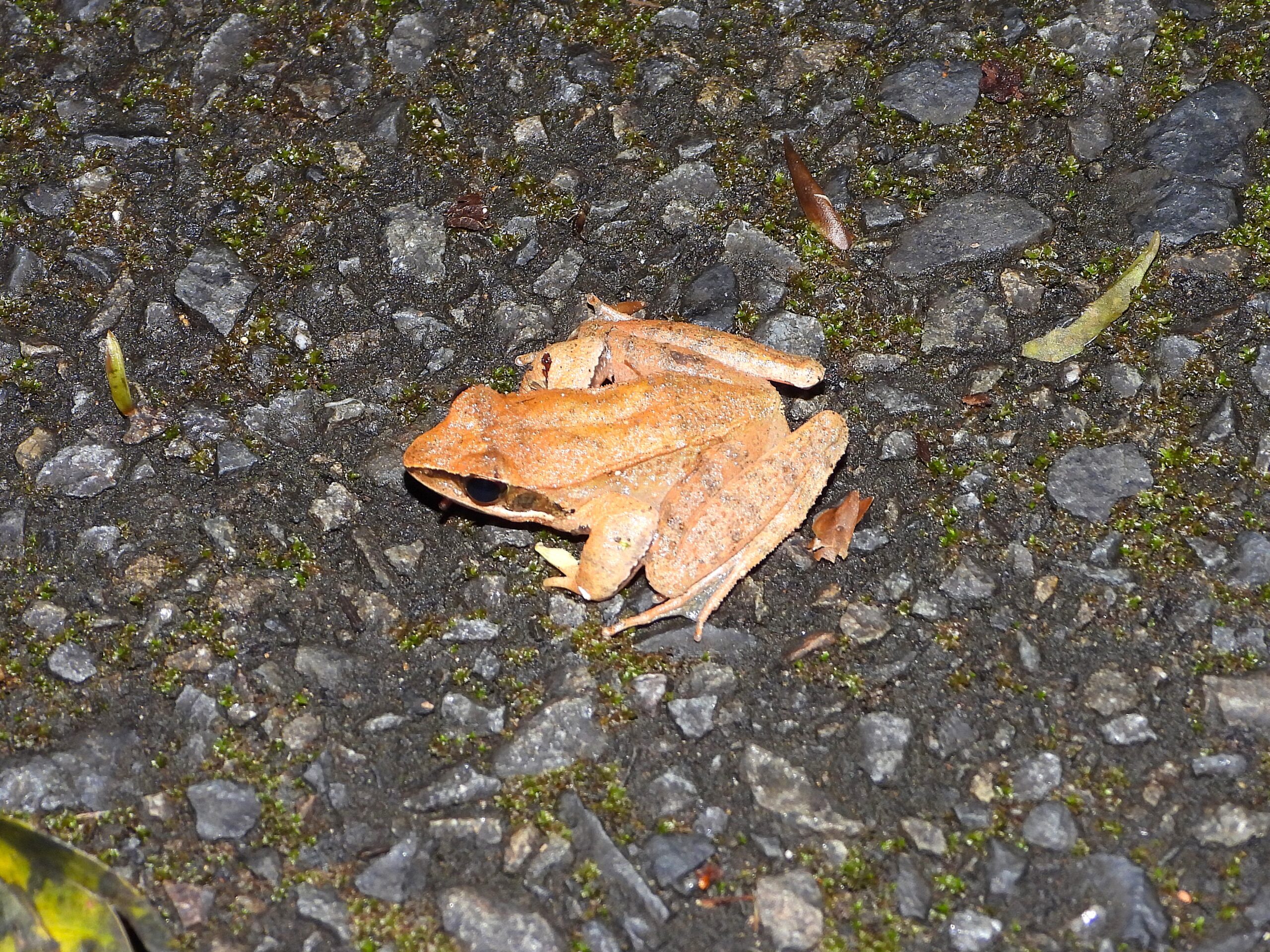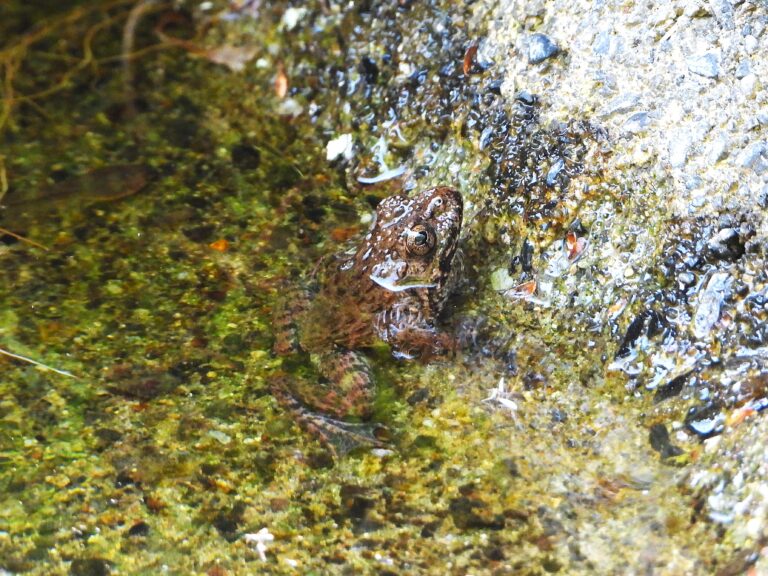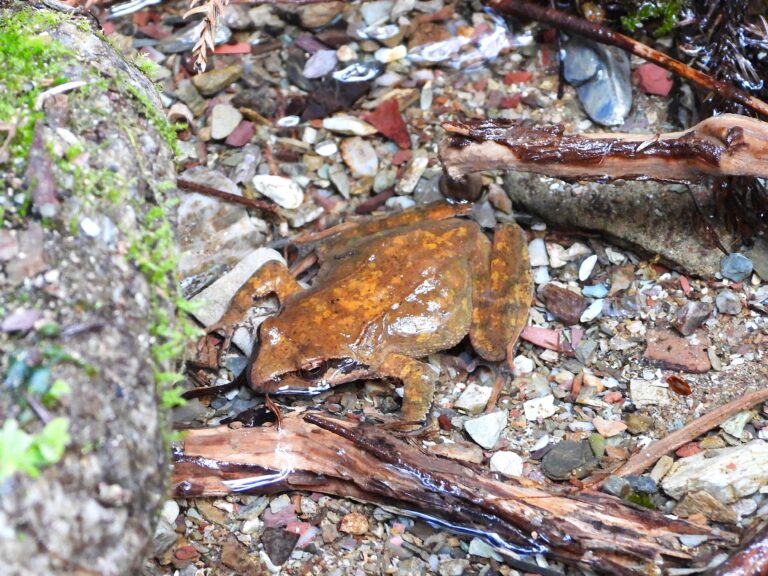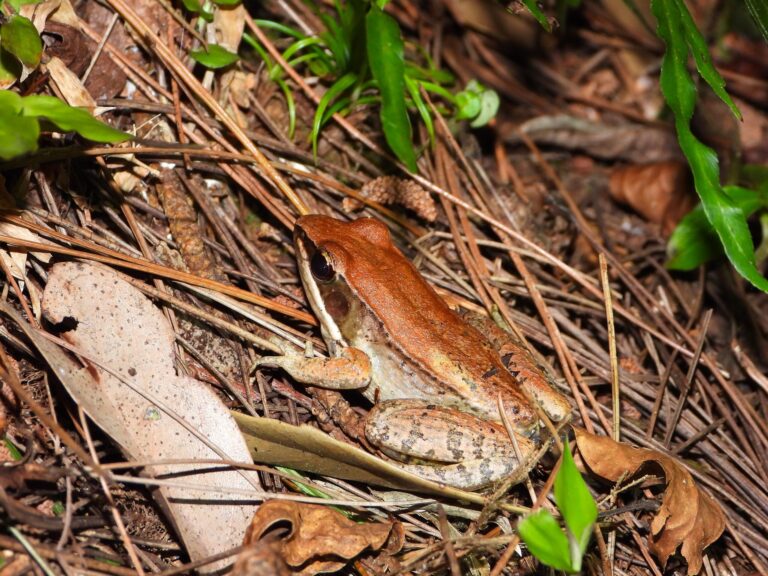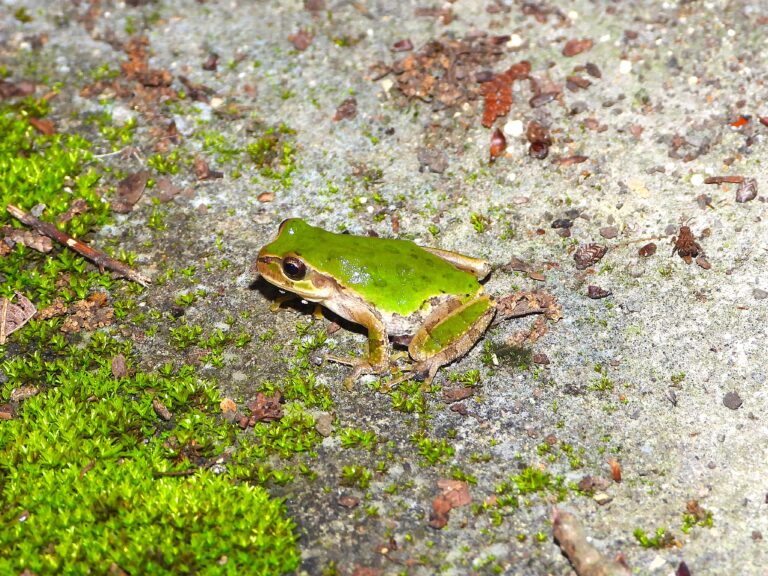Amami Brown Frog (Rana kobai) – Wildlife of Japan
Introduction
The Amami Brown Frog (Rana kobai) is a small amphibian that lives only on Japan’s Amami Islands in Kagoshima Prefecture. Herpetologist Masafumi Matsui described it in 2011 after recognizing clear differences from the Ryukyu Brown Frog (Rana okinavana). This discovery revealed how isolation has shaped the Amami Islands into a unique hotspot of evolution.
Appearance
Adults are small and slender. Males grow to about 32–41 mm in length, while females reach around 35–46 mm. Their reddish-brown to dark-brown skin blends with fallen leaves on the forest floor. A thin white stripe lines the upper lip, and long hind legs help the frog move quickly across wet ground.
Habitat & Distribution
This species lives only on Amami Ōshima, Kakeromajima, and Tokunoshima. It prefers subtropical evergreen forests, especially near moist valleys and shaded streams. Because it depends on stable humidity and unspoiled forests, even small habitat changes can reduce its population.
Behavior
The Amami Brown Frog stays mostly on the ground and becomes active at night. During the day, it hides under leaves, stones, or moss and comes out after rain. Researchers still have limited data on its detailed behavior, but field observations confirm that humidity strongly influences its activity.
Diet
Scientists have not yet published diet studies on Rana kobai. However, observations suggest it feeds on small forest invertebrates such as insects and spiders, helping to control insect populations within the forest ecosystem.
Reproduction
Little is known about its reproduction. It probably breeds in shallow forest pools or along slow-flowing streams, as related brown frogs in the Ryukyus do. No confirmed data on breeding season or clutch size are available yet.
Conservation
The IUCN Red List classifies Rana kobai as Near Threatened (NT). Its limited range and dependence on pristine forests make it vulnerable to deforestation, invasive species, and stream alteration. Conservation of the island’s forests and watersheds remains vital for its long-term survival.
Author’s Impression
I encountered this frog on a quiet forest road after rain in Amami Ōshima. Compared to other frogs on the island, it is small and easy to overlook, yet it represents a treasure found nowhere else on Earth. Seeing it reminded me how fragile and irreplaceable Amami’s natural heritage truly is.

